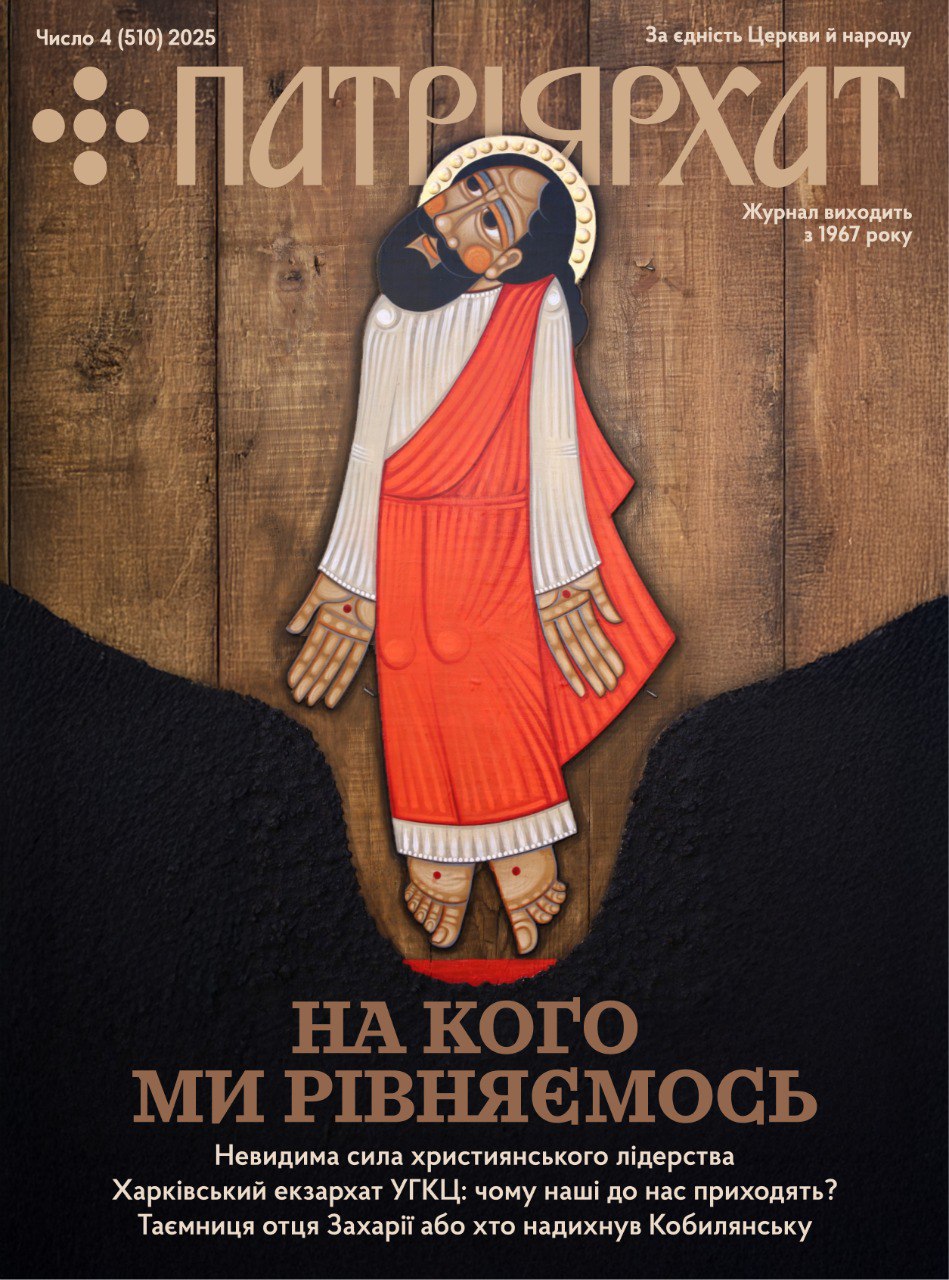A symposium: The Ukrainian Catholic Church 1945-1975 held at La Salle College, Philadelphia, Pennsylvania April 19, 1975, and sponsored by the Society for the Patriarchate in the Ukrainian Catholic Church.
Opening of Symposium
Dr. Leo D. Rudnytzky, symposium coordinator, introduced Archpriest John J. Mowatt, who delivered the opening prayer. Next Brother Daniel Burke, F.S.C., president of La Salle College, greeted the participants. Brother Burke cited Western ignorance of Eastern churches and expressed the hope that the symposium would contribute to its lessening. The Ukrainian Catholic Church, Brother Burke said, is a “natural bridge” between East and West; therefore, the symposium is “of great and timely importance.”
- The Soviet Government and the Ukrainian Churches
Msgr. Victor J. Pospishil (Department of Religious Studies, Manhattan College) provided an introduction to this part of the symposium with an historical overview of the relationship between government and the Ukrainian Catholic and Orthodox churches during the period between the 15th century and the present. The speaker cited the repeated attempts of foreign powers, which ruled Ukraine throughout the centuries, to subjugate the Ukrainian churches to their political purposes. This process culminated with the official elimination of the Ukrainian Catholic Church by the Soviet rulers after the Second World War. Msgr. Pospishil urged Ukrainians in diaspora to preserve their faith and gain strength from the example of the contemporary Ukrainian underground church.
A) Ukrainian Baptists — A Case Study in Soviet Persecution and the Resistance to it.
Rev. Roger Hayden (Center for Study of Religion and Communism, Keston College, Keston, Kent, England) traced the history of Baptists in the Ukraine from the first mass baptism in 1871, through spread in the early twentieth century, toward curtailment and persecution by the present Soviet regime. The first intensive period of persecution, Rev. Hayden recounted, took place in the latter 1920’s, during the period of the purges. After a relaxation — during the latter period of Stalin’s rule, — the regime renewed pressure in the 60’s. It tried to coop the religion’s leadership for political purposes and restricted its practice. Those who resisted were imprisoned. Rev. Hayden recounted, in detail, the case of Georgi Vins, the Kievan Baptist leader. Vins was imprisoned in 1966. Released, he was re-arrested in March, 1974. When he was sentenced to ten years of hard labor and exile, his supporters threw flowers in the coatroom.
B) The Ukrainian Orthodox Church
Rev. George Szumowski (Long Island University, New York) assailed Soviet persecution of the Ukrainian Orthodox Church. Speaking in Ukrainian, the priest attacked the politization of the Orthodox church leadership and the barbarity of the state’s attacks on religious practice. Marxism-Leninism, Rev. Szumowski said, characterizes religion as “bourgeois ideology” and “superstition”. The speaker said that the present nominal leader of the Ukrainian Orthodox Church, Metropolitan Filaret, is a tool of Moscow and his recent voyage in the United States was “purely propagandistic travel”. When Ukrainians abroad have protested against this state of affairs, in forums such as the United Nations, they have merely been “a voice in the desert”
C) The Ukrainian Catholic Church
Prof. Vasyl Markus (Loyola University and Center of Ukrainian and Religious Studies, Chicago, III.) assessed the results of Soviet policy toward the Ukrainian Catholic (Uniate) Church. He emphasized that the Soviet authorities sought to eliminate the church in Western Ukraine not only because of the atheistic base of Marxism-Leninism, but also, and more importantly, because of the cultural and political significance of the church in Ukrainian national life. When the Soviet Union emerged victorious from the Second World War, it proceeded, in 1945, to attempt “to strike a mortal blow against the church, but pretend it was not a classical anti-religious campaign,” the speaker explained. To achieve this end, the government adopted the strategy of forced conversion of the Ukrainian Catholics to the Orthodox religion. It isolated the church from foreign contacts, arrested the hierarchy, and then forced Catholics to submit to thinly disguised, direct leadership from Moscow. For the clergy, the only alternatives to acquiescence were leaving the order or martyrdom, Prof. Markus said.
The support that the Ukrainian Underground (UPA) gave to the church enabled Moscow to charge church leaders with “bourgeois nationalism”. Many were actually tried before military tribunals, Prof. Markus related. According to him, the death of Rev. Kostelnik, the priest who agreed to convert to Orthodoxy, was caused by government agents because he knew too much about the mechanics of the church’s subversion to Soviet will.
Later, in the 60’s, the speaker said, there came some relaxation in the authorities’ attitude toward the church; some local authorities even tolerated a more open manifestation of Catholicism. Therefore, Metropolitan Filaret asked the government to strengthen its campaign. Recently, Filaret stated that the Uniate church has been eliminated completely and forever. Thus, Moscow has come close to eliminating this “organic facet of life in the Western Ukraine,” Prof. Marcus conclude.
- The Vatican and the Ukrainian Catholic Church
The chairman of the session Professor Miroslav Labunka (La Salle College), introduced the topic as complicated and as one that has engendered much partisanship in historiography. Ukrainian leaders, he said, have in times of crisis always turned to Rome. So it is now. «We look for help which is not coming,” Prof. Labunka said, “We look to Rome in despair. There’s no place else to turn.»
A) Ukrainian Catholic Church and the Recent Ecumenical Movement
Father Eugene J. Fitzsimmons (Camden Diocesan Center, Camden, N. J.) traced the evolution of the Catholic Church’s attitude toward ecumenical Christianity. For centuries, the Church hierarchy prohibited the faithful from attending ecumenical meetings with members of other denominations because of danger of being led into error, Fr. Fitzsimmons said. It was presumed that Catholics were unable to learn anything useful from other Christians. This attitude changed only at the Second Vatican Council, the speaker said, when, in 1965, a juridical decree was issued. It stated that Catholics needed to acquire knowledge from other Christians on an equal footing. Father Fitzsimmons attributed this change in attitude to the action of the Holy Spirit on the Council Fathers.
Furthermore, Father Fitzsimmons said that the Eastern Churches have a special role in promoting the union of all Christians. The Ukrainian church can serve as a “study bridge” to the Orthodox. Because of this special mission, the speaker explained, Rome refused Ukrainian demands for a Patriarchate. Therefore, the priest said it was strange that there is not a greater emphasis on ecumenism in the Ukrainian church. As for the persecution and separation of Christians, Father Fitzsimmons asserted that the reason for it lie in “the hidden providence of God.” He urged Ukrainian Catholics to contribute to the ecumenical movement by “prayer and your example.”
B) The Vatican and the Silent Church
Archpriest John J. Mowatt (Byzantine Center, Fatima, Portugal) prefaced his remarks by saying that he was “a priest of Christ and his Church”, but not a priest of the Curia.
Rev. Mowatt said that the Patriarchate of Moscow was used as a tool for Communist propaganda around the world under the cloak of idealistic slogans such as ecumenism and world peace. Then he proceeded to trace the recent history of the Ukrainian Catholic Church and its persecution by the Soviet government. He recounted the freeing of Joseph Cardinal Slipyj by the Soviets and his arrival in Rome. Although Cardinal Slipyj was designated Major Archbishop of the Ukrainian Church, he was not allowed to exercise the prerogatives of this position, as stipulated by canon law. After years of public silence on Rome’s treatment of the Ukrainian church, Cardinal Slipyj spoke up. He made an impassioned appeal for better treatment of the “Ukrainian church, which sacrificed “rivers of blood and mountains of bodies” because of its loyalty to Rome. “The voice spoke in the Vatican,” Rev. Mowatt said, “but it was not by the Vatican. As far as the Vatican is concerned, the Ukrainian church should remain a silent church.”
Rev. Mowatt concluded by saying that Cardinal Slipyj gave a new identity for the Ukrainian church. As for ecumenism, he said, “Renewal and reconciliation begins inside the Church of God.” Rev. Mowatt’s remarks were followed by prolonged and fervent applause by the assembled.
C) The Ukrainian Catholic Lay Movement
Professor Petro Bilaniuk (Institute of Christian Thought, University of St. Michael’s College, Toronto, Canada) stated at the start that time constraints forced him to drop two thirds of his prepared remarks. He said that Ukrainian lay movements were founded in the Ukrainian national character which wavered between pessimism and the heroic tradition. Typically, Mr. Bilaniuk said, Ukrainian lay movements move from a spectacular start into a period of rest and rivalries. This phase is followed by letters submitted to the Pope. These are either overly obsequious or excessively belligerent. Later rallies ensue and there is a loud proclamation of the achievements of the movement. This phase, according to Mr. Bilaniuk, is followed by internal attacks and fragmentation. Finally, the movement slowly disintegrates.
(I immediately refused to admit these remarks as true — Editor)
- Ukrainian Catholic Church and Eastern Spirituality Rev. George A. Maloney, S. J (John XXIII Ecumenical Center, Fordham University, New York) previewed this topic. He said that Western spirituality tends to view God as transcendent and that man must strive to go outside himself to know Him. On the other hand Eastern spirituality views God as imminent, knowable but mystical.
Rev. Maloney proceeded to introduce the main speaker Professor Jaroslav Pelikan (Sterling Professor of History and Religious Studies, Dean Designate, Graduate School, Yale University, New Haven, Conn.)
Professor Pelikan delineated the differences between Eastern and Western spirituality. “When East does not understand the mystery of God, it becomes obscure. When West does not understand the mystery of God it becomes clear,” he explained.
Professor Pelikan contrasted the Western context of spirituality, in which doctrine and organization are paramount, with the Eastern context, in which liturgy has main importance. Furthermore in the Western Church man is viewed as lowly and never able to come near Christ; in the Eastern tradition God and man are inseparable. In the Western church the model is a crucifix with Christ on it; Christ’s divinity is stressed. In the Eastern church Christ is seen primarily in relation to His transfiguration. The speaker said that the Eastern tradition stresses man’s divinization. The paradigm for such “becoming god” is the Blessed Virgin Mary. Thus, Prof. Pelikan said Mary is honored much more in the Eastern churches than in the Western.

 >
>